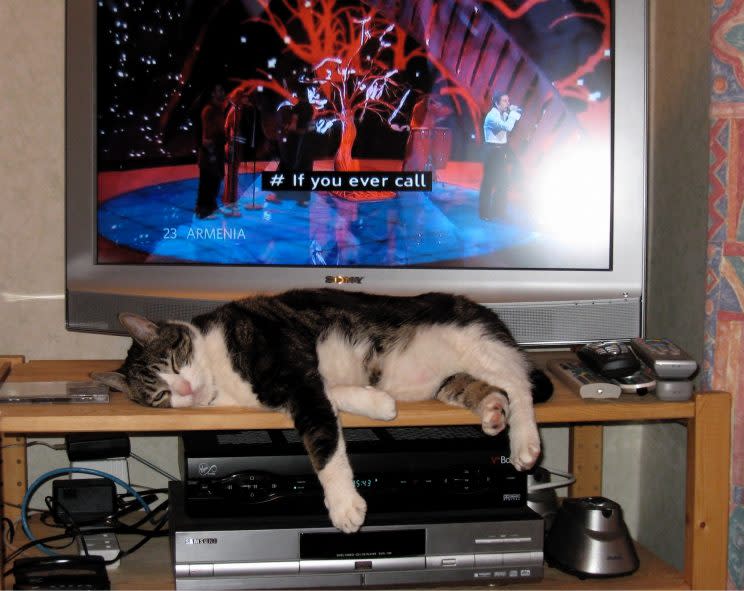The FCC just gave you a reason to hold off on buying a 4K TV

The Federal Communications Commission voted Thursday to open discussions on the deployment of a next-generation broadcast-TV standard that should offer picture quality up to 4K Ultra High Definition and better antenna reception than today’s over-the-air digital signals. Yes, the ones that only replaced analog broadcasts a few years ago.
That 3-0 vote by FCC Chairman Ajit Pai and commissioners Mignon Clyburn and Mike O’Rielly doesn’t mean you should return the set you bought for the Super Bowl (I’m sorry, “Big Game”).
But their move to start crafting a next-gen TV policy will add uncertainty to the business of buying a TV going forward.
The ABCs of ATSC 3.0
Like 2009’s transition to digital TV signals, this upgrade’s primary sales pitch is about a better picture — not just high definition, but the Ultra High Definition (UHD) 4K resolution that today remains largely confined to streaming-video services and Blu-ray discs.
“Next-gen TV” — the normal-people term for what technies call “ATSC 3.0,” which refers to the Advanced Television Systems Committee that helps write these standards — will deliver UHD signals over the air for free. That comes courtesy of major advances in video compression since the 1990s technology employed in today’s digital TV, aka “ATSC 1.0” or “DTV.”
Like current UHD sets, next-gen TV will also support HDR, or “high dynamic range,” which makes colors pop. HDR, unlike the 4K, also benefits smaller screens.
For local stations, next-gen TV offers the added lure of supporting interactive data services (some of which might cost extra) and reception on future mobile devices.
For viewers — cord cutters, especially — it promises more reliable reception than current digital broadcasts. In a 2015 demonstration, test hardware picked up a half-strength ATSC 3.0 broadcast signal from 10 miles away … in the basement of a Cleveland office building. That’s impressive.
Sets and stations
Unfortunately, nobody sells an ATSC 3.0-compatible set in the U.S. That’s not likely to happen this year, either, based on the nearly-complete absence of the technology from most exhibits at CES in January.
Instead, next-gen TV will see its commercial debut in Korea, which will host and broadcast the 2018 Winter Olympics in the new format. I suspect we’ll see U.S.-market ATSC 3.0 TVs at CES 2018, but not sooner. Considering how cheap UHD sets have already gotten, though, I doubt this will involve a noticeable price premium.
U.S.-based ATSC 3.0 broadcasts, meanwhile, haven’t gone beyond tests in a few cities. In Cleveland, for instance, local station WJW broadcast the World Series live on an unused channel, while Raleigh-Durham’s WRAL began airing its news programs on next-gen TV last summer.
All local stations will have to decide how to allocate their airwaves between existing digital broadcasts that have an actual audience and next-gen signals that might win them a larger, more profitable audience.
The FCC proposal calls for simulcasting digital and next-gen signals. ATSC spokesman Dave Arland explained that because a station can’t send out both on the same frequencies, it will have to work out a trade with another station.
Since stations would likely move their existing digital broadcasts to new frequencies, your TV might regularly have to rescan the airwaves to see where channels have moved. It might also displace some of the secondary, broadcast-only channels that are available only over the air today.
Not a command economy
This may evoke bad memories of the prolonged DTV transition. But next-gen TV is not a case of the TV industry boldly going where it’s gone before: The FCC proposal sees this as a voluntary migration.
Nobody will have to start making next-gen TVs or stop selling ones with today’s tuners, nor will the Feds make any station retire its current digital signal. And you won’t have any government-subsidized converter boxes to ease viewing at home.
That’s because, unlike in the late 1990s, there isn’t spare frequency to loan to TV stations for a temporary period of simulcasting.
The government already took back those airwaves and auctioned it to wireless companies, and the FCC has since launched a program that lets stations offer unused spectrum and get a cut of the proceeds when wireless services bid for it.
“You can’t just flip a switch and say this market is now ATSC 3.0,” Arland said.
Instead, we’re looking at a long, slow and uneven journey that may yield better and more reliable broadcasts — and another alternative to cable and satellite bills that aren’t getting any smaller.
More from Rob:
Broadband companies can’t build out networks, and it’s hurting consumers
Wireless carriers are fighting for your cash, and that’s good news
How Verizon’s new ‘unlimited’ plan compares to the competition
Study finds most people are scarred of being hacked, but don’t do much about it
Email Rob at [email protected]; follow him on Twitter at @robpegoraro.
